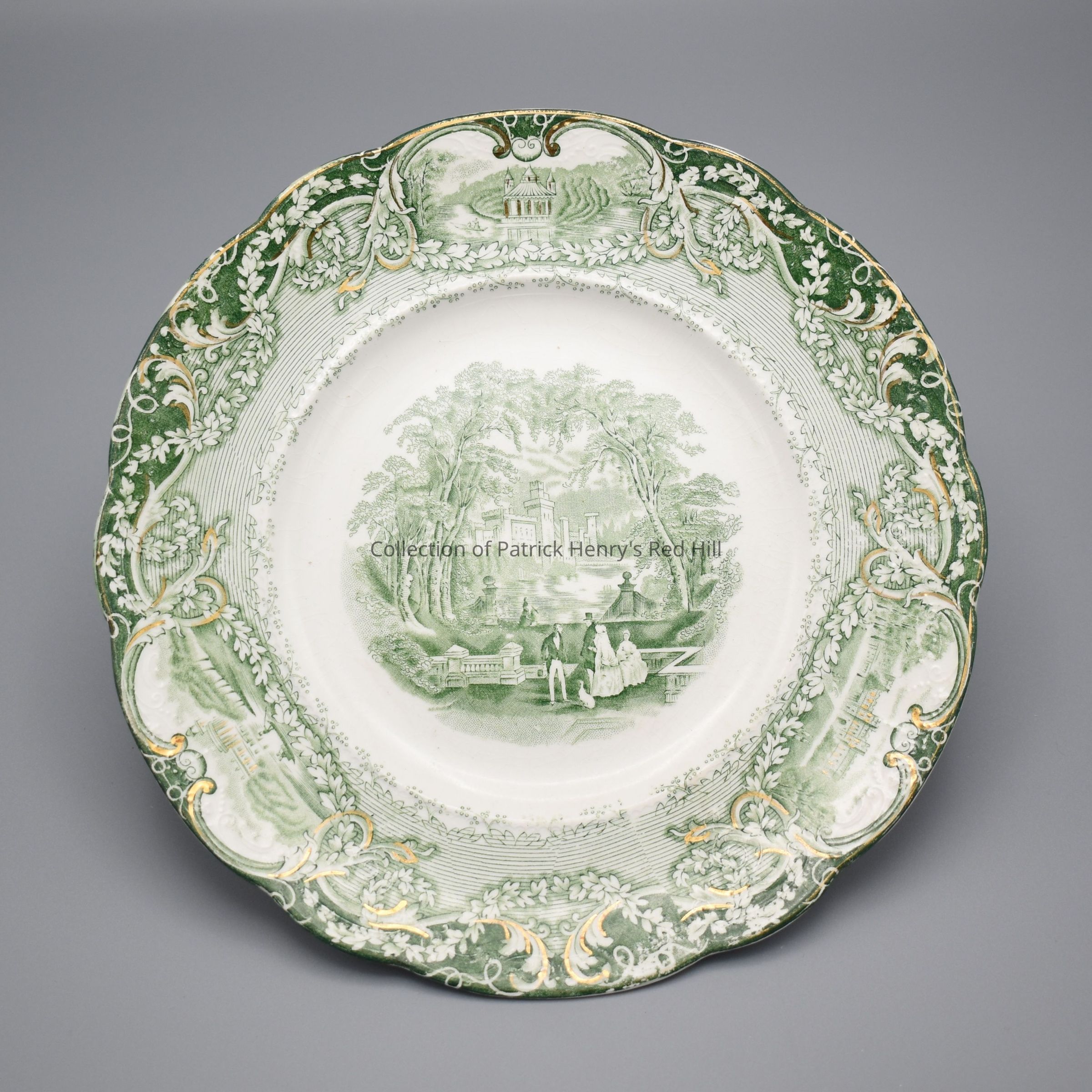Notes
This dinner plate is one of a set once used at Windstone, the Henry family plantation that once adjoined Red Hill to the east.
The plates were made by the J. & G. Meakin company sometime between 1890 and ca. 1915. J. & G. Meakin was an earthenware and ironstone manufacturing company from Hanley, England. Hanley is one of six towns located within an industrial area known as the center of ceramic production as early as the 17th century, referred to as “The Potteries” or “The Staffordshire Potteries."
J. & G. Meakin’s history begins with James Meakin Sr. (b. 1807), who began potting at Lane End, Longton, England, in a partnership with John Proctor. By 1846, James Meakin moved to the Newtown Pottery in Longton and then to Cannon Street in Hanley. In 1851, James Meakin Sr. retired due to failing health, and the company was succeeded by his two sons, James and George, who formed the successful partnership known as “J. & G. Meakin Pty Ltd.” The brothers stayed only one year at Cannon Street before moving the factory to Market Street, where they remained for seven years. In 1859, they moved to the newly constructed Eagle Pottery (1859–1970) in Hanley. In 1887, J. & G. Meakin purchased the Eastwood Pottery (1887–1958) from their brother, Charles Meakin, becoming the largest potting company in Britain. James Meakin Jr. died in 1885, and George Meakin died in 1891. The family business was incorporated as J. & G. Meakin Ltd. in 1890 and continued under George Eliot Meakin (son of George Meakin) from 1891 to 1927, and then under Bernard Meakin (son of James Meakin) from 1927 until his retirement in 1955.
The majority of Meakin’s wares were made for export to the United States and the British Empire Colonies. Meakin’s was a large-scale manufacturer of earthenware and ironstone tableware products, including white granite dinner and tea ware.
This set is likely to have originally belonged to Patrick Henry's grandson, Edward Winston Henry Jr. (1840–1904). Edward Henry Jr. owned Windstone following the death of his father, Edward Winston Henry Sr. (1794–1872), who first established the plantation in 1814. The plates remained at Windstone when they passed to Edward Henry Jr.'s son, Dandridge Yuille “D. Y.” Henry (1869–1950), and then to his daughter, Margaret Henry Ottarson (1911–1981), who was born and grew up at Windstone.
This china, along with the other items in 2024.9 and 2023.24 accessions, was in Ottarson’s Nashville, Tennessee house when she sold it to her friend, Pamela Wood Kirchner. Kirchner gifted this china to the Patrick Henry Memorial Foundation on July 21, 2024.
